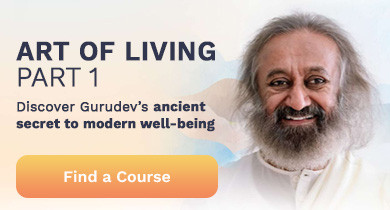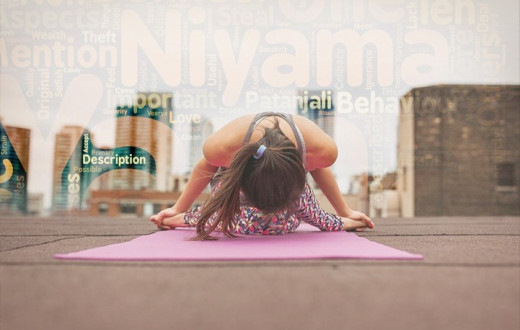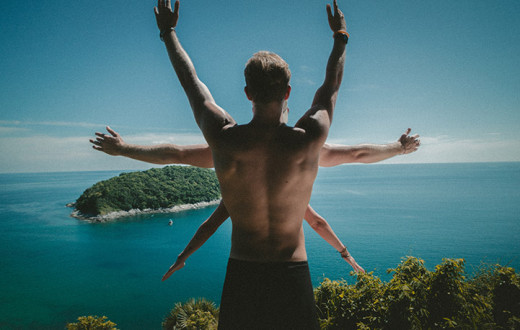By Elizabeth Herman
Corpse Pose, or shavasana, isn’t just lying down after your yoga practice. Learn how to enjoy all the surprising benefits of this ancient yoga posture.
Corpse pose, or shavasana (Shuh-VAH-SUN-aa), is a restorative posture that provides deep relaxation and rest for the body and mind. Shavasana is usually part of a yoga sequence, and is practiced towards the end of a yoga class. It gets its name from the Sanskrit words shava, meaning corpse, and asana, meaning pose. This pose is often a favorite of yoga teachers and students alike because of the blissful relaxation it provides . Unfortunately, many yoga practitioners tend to skip this pose in a rush to get to the rest of their day. However, to get the best results from our yoga practice (and enjoyment!) we should always save at least five minutes for corpse pose at the end of our asana practice.
Level of difficulty: Beginner
Step-by-step instructions
Lie down flat on your back on top of your mat with your legs straight. You can use a folded blanket or a small pillow under your neck or knees if needed to make your entire body completely relaxed and comfortable.
Keep your legs spread comfortably about hip-width apart, and let your feet, knees, and toes relax completely (your feet may rotate slightly outward). Close your eyes.
Place your arms alongside your body with your palms facing upward. Let your hands and fingers relax. Gently tuck your shoulder blades so they are flat on your mat, and let the chest softly open up.
Simply be with your body and breath. Take a couple deep, slow breaths, becoming aware of your chest and abdomen rising and falling. After a few breaths like this, begin to breathe normally. Relax and feel as though your whole body is melting into the earth beneath you. Completely surrender and let go. Keep your body totally still for a few minutes.
Without much effort, scan the entire body, taking your awareness to different body parts one by one. Slowly release tension from your feet, calves, knees, thighs, pelvis, hips, abdomen, chest, shoulders, left arm and hand, right arm and hand, neck, face, tongue, head, and scalp. As you scan your body, feel yourself sinking deeper and deeper into relaxation. In the beginning, your mind may wander, but it will slowly settle down into stillness.
Remain still for at least 5 to 10 minutes.
To begin to come out of shavasana, keep your eyes closed and gently wiggle your fingers and toes.
Slowly roll onto your right side, and rest in that position for a few moments.
Using the support of your right hand, gently come up into a seated position.
Keep your eyes closed, and take a few deep breaths in and out as you gradually become aware of your environment and body. When you feel complete, slowly and gently open your eyes. This is a great time to practice pranayama and meditation.
Benefits of corpse pose
Provides deep, meditative rest, allowing for the repair of cells and tissues
Relaxes the nervous system
Relieves fatigue, stress, and even mild depression
Stimulates the parasympathetic nervous system, resulting in reduced heart rate and blood pressure
Reduces anxiety
Alleviates insomnia
Balances the vata dosha (associated with the air element and dryness)
Leaves you feeling rejuvenated
Increases long-lasting energy levels and productivity
Helps you gently and positively end your yoga session
Precautions
Perform this posture on a flat, hard, supportive surface.
Practice shavasana in a quiet and relaxing environment with peaceful surroundings.
Avoid all movement during corpse pose so you don’t get distracted and disrupt the restfulness of the practice.
Don’t practice corpse pose if your doctor has given you a medical reason to avoid lying on your back. Ask your yoga teacher to show you modifications.
While practicing shavasana, keep the space relatively dark. You can even try covering your eyes with an eye pillow to see if this helps you go deeper into relaxation.
Use a light blanket to keep your body warm if necessary.
Modifications and variations
To relieve lower back discomfort, place a bolster, pillow, or folded blanket under your knees.
To relieve neck pain, place a small pillow or cushion under your neck for support.
Preparatory poses and follow-up poses
Shavasana should be the final posture in your yoga practice.
Fish pose (matsyasana) is a good heart-opening supine pose that practitioners often use right before going into shavasana.
Learn more
Browse our entire yoga pose library, and learn more about each yoga pose in detail.
While a regular yoga practice can result in improved health, it is not a substitute for medical treatment. If you have a chronic or serious medical condition, practice yoga only after consulting a doctor. It is best to learn and practice yoga under the supervision of a trained and certified yoga instructor. Explore our Art of Living Yoga Studio for a great selection of live online classes with friendly, knowledgeable yoga teachers.
Take a few deep breaths and uplevel your yoga practice
When you follow-up your asana practice with powerful breathwork and meditation, you will bring a new depth to your practice. Join a free online session with a live instructor, and experience guided breathwork and meditation now. You will also learn about SKY Breath Meditation, which has helped millions of people worldwide to reap the deeper benefits of yoga, and take their yoga practice to a next level. Are you ready to level up?
Elizabeth Herman is a long time meditator, a trained yoga teacher, and a PhD in English, with concentrations in Rhetoric and Composition, and Literature. She offers writing support to clients, teaches locally, and volunteers for a better world.





























